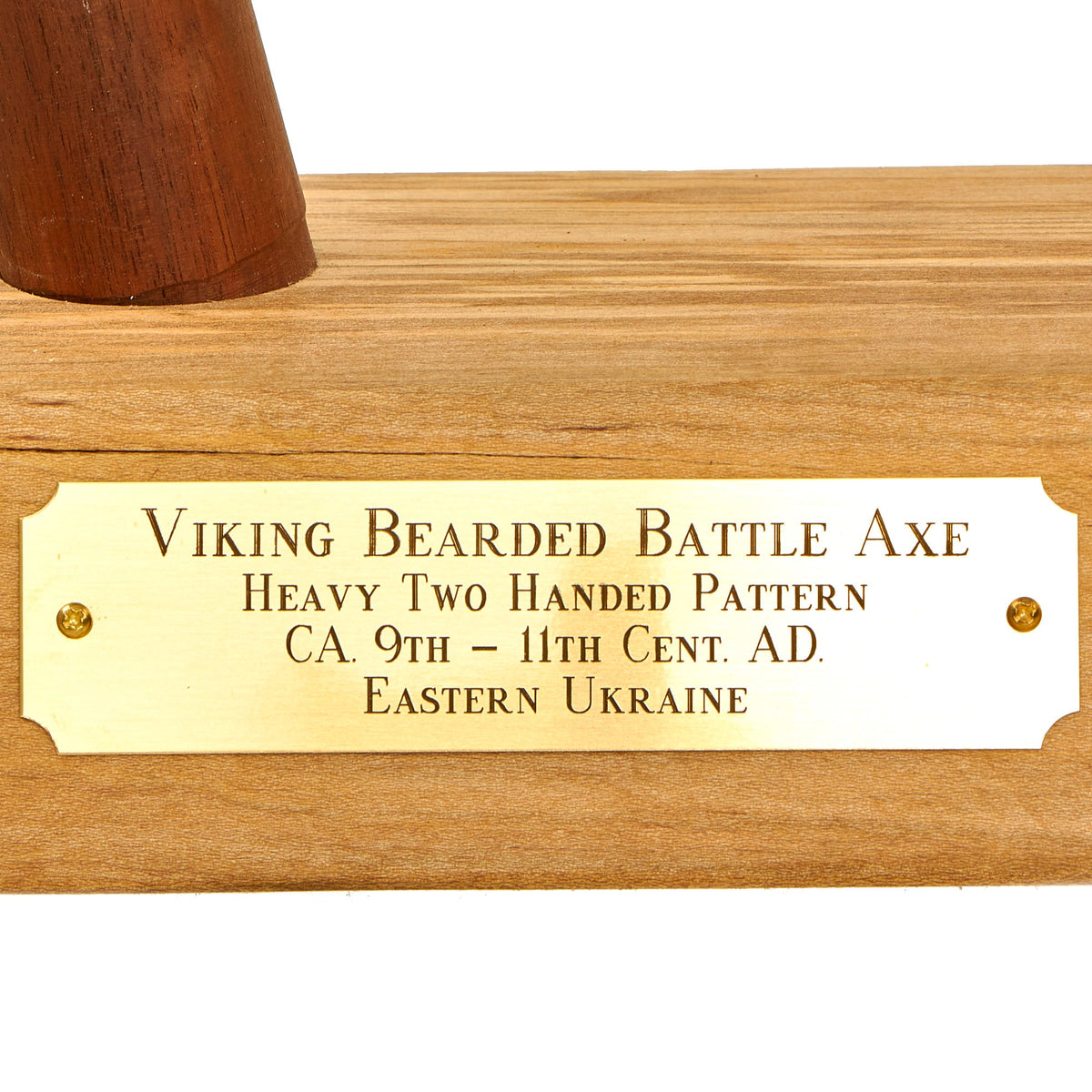Original 9th – 11th Century Viking Two-Handed Bearded Battle Axe Head Excavated in Eastern Ukraine with Stand Original Items
$ 1.495,00 $ 373,75
Original Item: One of a Kind. A bearded axe, or Skeggøx (from Old Norse Skegg, “beard”, and øx, “axe”) refers to various axes, used as a tool and weapon, as early as the 6th century AD. It is most commonly associated with Viking Age Scandinavians. The hook or “beard”, i. e. the lower portion of the axe bit extending the cutting edge below the width of the butt, provides a wide cutting surface while keeping the overall weight of the axe low. The “beard” of the axe would also have been useful in battle, for example to pull a weapon or shield out of a defender’s grasp.
This is a very nice example of a 9th-10th Century Bearded Battle Axe head, intended for a heavy two handed Axe, recently excavated from a site in Eastern Ukraine. In design it almost exactly matches an example found on the Island of Gotland. As expected, it shows quite a bit of rust damage, however the original quality can still be seen. It has the classic profile, with inlets around the socket / eye for securing the axe to the haft. It measures approximately 8 inches in length, with a 4 1/2 inch long edge. It looks like the bottom of the edge was broken off in the distant past.
It comes complete with a very nice wooden display stand, which has a brass plaque reading:
VIKING BEARDED BATTLE AXE
HEAVY TWO HANDED PATTERN
9TH – 11TH CENT. AD.
EASTERN UKRAINE.
A wonderful display piece, ready to add to your collection!
Material: Iron
Size: 8 1/8” long, 4″ broadest section of blade, 3” at haft.
Edge Length: 4 1/2″
Age: 9th-11th century
Origin: Ukraine – Viking
Fast Shipping with Professional Packaging
Thanks to our longstanding association with UPS FedEx DHL, and other major international carriers, we are able to provide a range of shipping options. Our warehouse staff is expertly trained and will wrap your products according to our exact and precise specifications. Prior to shipping, your goods will be thoroughly examined and securely secured. We ship to thousands clients each day across multiple countries. This shows how we're dedicated to be the largest retailer on the internet. Warehouses and distribution centres can be located throughout Europe as well as the USA.
Note: Orders with more than one item will be assigned a processing date depending on the item.
Before shipping before shipping, we'll conduct a thorough inspection of the items you have ordered. Today, the majority of orders will be delivered within 48 hours. The delivery time will be between 3-7 days.
Returns
The stock is dynamic and we cannot completely manage it because multiple stakeholders are involved, including our factory and warehouse. So the actual stock may alter at any time. It's possible that you may not receive your order once the order has been made.
Our policy is valid for a period of 30 days. If you don't receive the product within 30 days, we are not able to issue a refund or an exchange.
You can only return an item if it is unused and in the same state as the day you received it. You must have the item in its original packaging.
Related products
Uncategorized
Uncategorized
Uncategorized
Uncategorized
Uncategorized
Uncategorized
Uncategorized
Uncategorized
Uncategorized
Uncategorized
Band of Brothers ORIGINAL GERMAN WWII Le. F.H. 18 10.5cm ARTILLERY PIECE Original Items
Uncategorized
Armoured Fighting Vehicles of the World: AFVs of World War One (Hardcover Book) New Made Items
Uncategorized
Uncategorized
Uncategorized
Australian WWII Owen MK1 Machine Carbine SMG Custom Fabricated Replica with Sling Original Items
Uncategorized
Uncategorized












































































